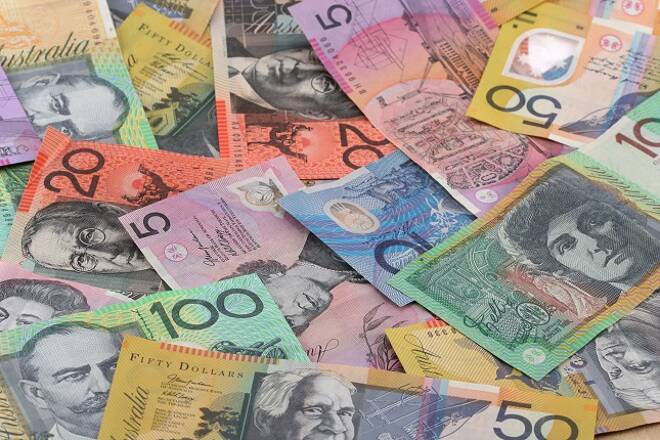Advertisement
Advertisement
Aussie Dollar Plummets in Sympathy with Chinese Yuan; Recession Fears Drive Japanese Yen Higher
By:
The Australian Dollar plummeted last week, falling in sympathy with the Chinese Yuan as investors fretted about the hit to the Chinese economy from the coronavirus.
The major Asia Pacific currencies finished mixed last week with the Japanese Yen posting a solid gain on safe-haven buying, and the Australian and New Zealand Dollars drilled lower as the spread of the coronavirus took its toll on the financial markets.
The coronavirus, which originated in Wuhan, China, has now spread around the globe, prompting the World Health Organization (WHO) to declare an international health emergency.
Japanese Yen
The Japanese Yen opened the week with a gap to the downside before consolidating for two sessions then ending the week with a steep break. The price action was manipulated by a drop in U.S. Treasury yields, which tightened the spread between U.S. Government bonds and Japanese Government bonds, and lower demand for risky assets. Economic data from Japan had little impact on the price behavior.
Last week, the USD/JPY settled at 108.356, down 0.931 or -0.85%.
In the U.S., the benchmark 10-year Treasury yield was on track to post its biggest monthly drop since August 2019 as the deadly coronavirus fanned recession fears.
Additionally, the 10-year yield also dipped below the three-month Treasury rate of 1.552%, inverting a key part of the yield curve. This part of the yield curve is also closely watched by the Federal Reserve for signs of an economic downturn.
As far as demand for risk is concerned, global equity markets finished the weekly sharply lower as investors grew increasingly worried about the potential economic impact of China’s fast-spreading coronavirus.
The major global averages also saw an uptick in volatility. In the U.S., the benchmark S&P 500 Index closed marginally lower for January. The blue chip Dow Jones Industrial Average had its first monthly loss since August. All of this led to lower demand for risk, making the Japanese Yen an attractive safe-haven asset.
On the data front, Housing Starts, Preliminary Industrial Production and the Unemployment Rate came in better than expected. However, this positive news was offset by a drop in Consumer Confidence, a dip in Tokyo Core CPI and a plunge in Retail Sales.
Australian Dollar
The Australian Dollar plummeted last week, falling in sympathy with the Chinese Yuan as investors fretted about the hit to the Chinese economy from the coronavirus.
Sellers also reacted to a report showing China’s factory activity weakened ahead of the coronavirus outbreak. The purchasing managers’ index for manufacturing reached 50 this month, lower than last month’s 50.2 but in line with what analysts polled by Reuters expected.
Traders are discounting the news because it doesn’t reflect the impact of the virus on the economy. This will show up in the following months.
In economic news, Australian quarterly inflation rose 0.7%, higher than the 0.6% forecast, according to the Australian Bureau of Statistics. The annual pace climbed to 1.8%. This was below the Reserve Bank of Australia’s target of around 2% to 3%.
Last week, the AUD/USD settled at .6687, down 0.0139.
New Zealand Dollar
The New Zealand Dollar was pressured last week by concerns over the coronavirus crisis. The catalysts behind the weakness were lower demand for higher-yielding currencies, and a plunged in commodities. Traders were particularly worried about a plunge in tourism dollars.
Former Bank of New Zealand chief economist Tony Alexander said, “The virus outbreak is likely to depress the tourism industry worldwide as people choose to stay home rather than risk exposure in crowded airplanes, buses and terminals. And it is worth adding in the slowly growing effect of the flight-shaming movement coming out of Europe.”
Also last week, data showed New Zealand’s annual trade deficit came in at $4.3 billion, down from the $4.7 billion expected.
Last week, the NZD/USD settled at .6463, down 0.0145 or -2.19%.
About the Author
James Hyerczykauthor
James Hyerczyk is a U.S. based seasoned technical analyst and educator with over 40 years of experience in market analysis and trading, specializing in chart patterns and price movement. He is the author of two books on technical analysis and has a background in both futures and stock markets.
Advertisement
